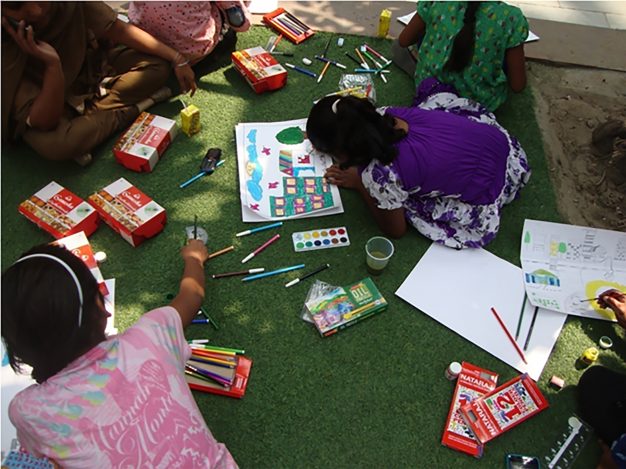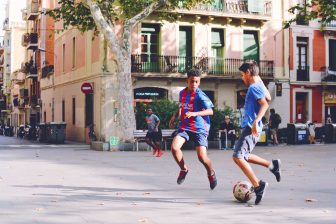
India explores the city as urban ‘play-lab’ for children
Cities are the new critical urban laboratories for the interactive engagement of children with their urban environment. The Child Friendly Cities debate presents an opportunity to initiate a discourse and encourage cities themselves to become catalysts in mainstreaming the needs of children, contributing to a new form of playable urbanism.
Today, 27% of the world’s children live in cities, nearly half of them in slums and dilapidated conditions. A consideration of the direct impact that cities have on children’s health, as well as their critical role in how children perceive and become engaged with the urban environment, reinforces the importance of skilful city planning for the balanced development of all groups of children within their urban context.
Although policy frameworks and global urban agendas have addressed the rights of children in cities, their everyday needs are often not fully considered in the urban planning processes and mainstream discussions about urbanism. While children growing up in urban areas have access to various opportunities, they are also vulnerable to urban challenges such as pollution, cramped housing conditions, long commutes, inadequate access to recreational and play space, high crime rates and more. Furthermore, the rapid and uncontrolled growth of cities in recent decades has outstripped the capacity of urban administrations and infrastructure services to meet the physical and social needs of people living in them. It is well known that issues that make urban life difficult for children also impact other sections of society, such as women, elderly and the disabled. Thus, including child-friendly aspects within city-making is an objective that cuts across many overlapping problems, not just benefiting children alone.
In this intensely urbanizing world, cities need to play a stronger role towards developing an inclusive urban form that can be enriched and further interwoven with physical cues to provide children with a perspective that can help to develop their own sense of place. To realize this, innovative methods such as the popsicle test (1), the toddler walk-shed (2) and urban95 (3), need to be explored in detail, to overlay a new form of playful urbanism onto the existing, constrained, urban fabric. Only through such pro-active urban experiments can a discourse be opened that promotes children’s everyday freedoms and choices, and links it directly to their local geography, mobility and safety; cultivating a unique identity for the city and fostering a sense of belonging for its children and young people.
These principles of inclusive city-making are being supported by Bhubaneswar, capital city of Odisha, India, through the establishment of the Child Friendly Smart City Centre, to develop knowledge-driven, effective planning and urban design frameworks that include children’s perspectives and encourage their participation to create vibrant urban neighbourhoods. The initiative promotes layering of the city from the perspective of children through micro-landmarks that shape their understanding of a place, provide opportunities for independent mobility and greater interaction for a better designed public realm and open spaces. It is through such urban dialogues that children will discover and develop ingenious ways to shape unexpected places and make the city their own.
Author: Sabina Suri & Divya Jindal
Photo Credit: Sabina Suri & Divya Jindal
Interested in hearing more about this topic? Join us at the Child in the City Conference in Ghent, Belgium on the 7-9th November!
(1) Groskop, V. (2015, August 21). https://www.theguardian.com/cities/2015/aug/21/city-good-children-popsicle-test-crime-property-play. Retrieved September 2015, from www.theguardian.com: https://www.theguardian.com/cities/2015/aug/21/city-good-children-popsicle-test-crime-property-play
(2) Feldman, E. (2015, January 20). http://planplaceblog.com/2015/01/20/child-friendly-cities/. Retrieved August 2015, from www.planplaceblog.com: http://planplaceblog.com/2015/01/20/child-friendly-cities/
(3) Bernard van Leer Foundation. (n.d.). https://bernardvanleer.org/solutions/urban95/. Retrieved March 2016, from www.bernardvanleer.org: https://bernardvanleer.org/solutions/urban95/




